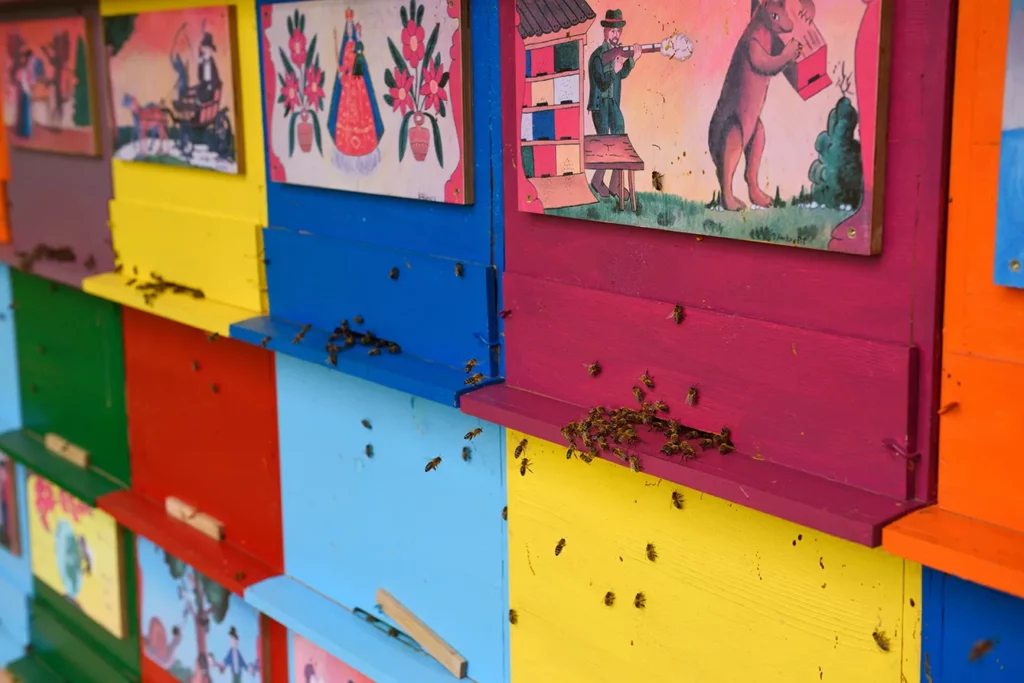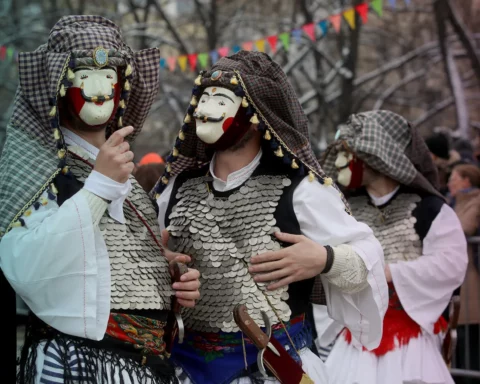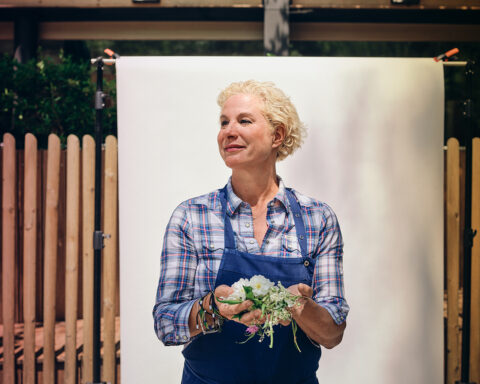It is well known that Slovenes are among the most, if not the most, bee-loving people worldwide. The strong tradition manifests beyond simply honey production. Along with good honey, they have developed fine products that add to the mainstream cultural identity. The most obvious examples are beehive endings, which are small boards on the front side of beehives that are painted with various motives, giving the beekeeping a unique charm enriched with art.
Slovene beehives: creative culture of everyday life
Today, they are only produced as replicas and sold as souvenirs, but nationwide mass production carved a uniquely particular element into the cultural landscape at one point. Although simple, the paintings are a sign of a creative culture that incorporated the artistic activities of untrained artists into everyday life, an essential part of which was beekeeping.




It all started in the mid-18th century when the first beehive endings were made in the Slovene regions of Upper Carniola (Gorenjska) and Carinthia (Koroška). This form of folk art soon became famous across the rest of Slovenia. The artists were amateurs – everyday people with no artistic education. Yet, this led them to develop something new through simple creative expression.
The paintings’ themes testify to what the people’s lives were like, what was meaningful to them, and what kind of humor they shared among themselves. About half of all recorded motives are religious, depicting a saint, like Saint George slaughtering a dragon, scenes from the Bible, and celebrations of feasts. The other half consists of depictions of peasant life, like the miller and his wife harvesting the swarm and a peasant lawsuit (illustrating two farmers arguing over a cow while a lawyer milks it); important events from history, and sometimes satirical and amusing looks at their daily lives.
The latter reveals the great sense of humor they had. Despite not being politically correct for some modern sensitive souls, it often made fun of the downsides of both genders. We can still understand and smile upon seeing them.
The devil, the hunter, and the ugly woman
Motifs like the devil grinding a woman’s tongue, a man returning drunk from a pub, the Old Woman’s Mill (representing the devil who carries the old and ugly woman into the mill and takes the young and beautiful out), a wife dragging her husband out of pub, and a husband holding his wife on a cross, are funny and rarely seen in severe and mainstream art.
It doesn’t only make fun of the sexes, though. Some vocations were also the brunt of jokes; the hunter seems to be the primary target among them. Famous motives are the Hunter’s Funeral, animals burying a dead hunter, and a depiction of a fox shaving a hunter.
After the end of WWI, the active tradition of producing such beehive endings died almost as fast as it suddenly started and spread. But it remained in Slovene cultural consciousness. In the span of around 150 years, as many as 50,000 beehive endings were produced, many of which have been conserved and are now a priceless element of Slovene cultural heritage. Adding to the bee-keeping lifestyle of Slovenes, they won’t be forgotten any time soon.







